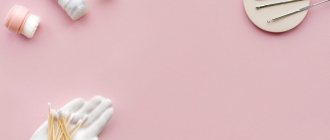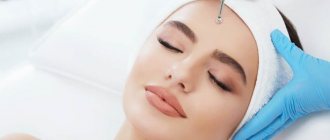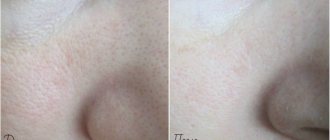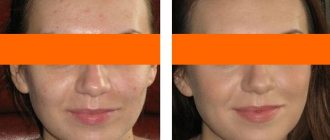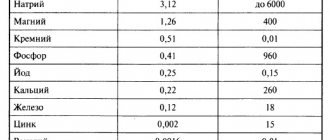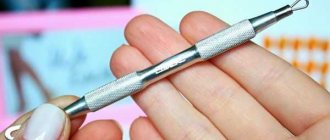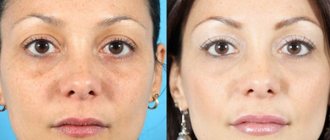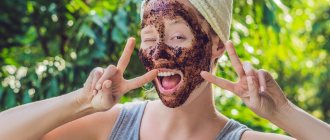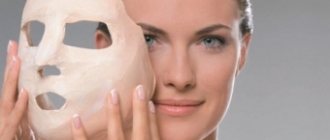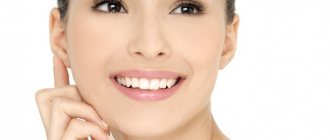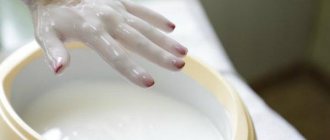Modern speech therapists have in their arsenal many different ways of producing sounds and normalizing speech.
One of the most effective and significant in the eyes of parents is speech therapy massage. This is a very effective modern method of speech therapy, as a result of which it is possible to change the condition of blood vessels, muscles and nerves, and tissues of the peripheral speech apparatus. Speech therapy massage is carried out if there are certain indications. It will be useful for rhinolalia, mechanical dyslalia, stuttering and dysarthria. Massage for dysarthria allows you to prepare the speech apparatus of children for further speech therapy sessions.
What is dysarthria
This is the name for a speech disorder that occurs when there is insufficient innervation of the speech organs. In this condition, the mobility of the speech apparatus is limited. Dysarthric people speak slurredly; they say about such people: “porridge in the mouth.”
Dysarthria can develop in children as a result of injuries, tumors, neuroinfections and other pathologies of the brain and central nervous system. In childhood, in addition to the pronunciation side, other components of the speech system also often suffer. The baby may have hearing impairments and make mistakes when reading or writing. In adulthood, dysarthria develops after strokes or injuries. In this case, only pronunciation suffers.
There are many forms of dysarthria. Today in the world, most experts use a classification that implies the presence of seven types of this speech disorder :
- Sluggish dysarthria is called dysarthria that occurs as a result of damage to the hypoglossal, glossopharyngeal and vagus nerves. Failure of neuromuscular transmission leads to peripheral paralysis of the articulatory muscles. This type may be accompanied by swallowing disorders and is part of the bulbar syndrome.
- Spastic dysarthria is observed with bilateral muscle paralysis, which develops with bilateral damage to the anterior central gyri. This form is included in pseudobulbar syndrome.
- Unilateral upper motor neuron dysarthria is observed with unilateral damage to the central anterior gyri.
- Ataxic dysarthria develops if the lesion affects the cerebellum or its pathways. With this type of disorder, speech becomes scanned, modulation is disrupted, and the volume constantly changes.
- Hyperkinetic dysarthria is a type of extrapyramidal disorder. The reason for its formation is a disruption of the subcortical nodes, as well as their nerve connections. This dysarthria is a hyperkinesis - a condition when muscle movements are involuntary and sudden. Can be combined with hyperkinesis of various locations.
- The hypokinetic form also refers to extrapyramidal dysarthria, which occurs after damage to the subcortical nodes. Most cases are observed in parkinsonism. Speech is inexpressive and slow.
- Mixed dysarthria is called dysarthria, which develops against the background of multifocal damage to the nervous system. Often occurs as a result of injury. In this case, a combination of various mechanisms of dysarthria occurs.
Dysarthria is diagnosed at the age of five . After a speech therapy examination, a child with symptoms of dysarthria is referred to a neurologist. The doctor, after a thorough examination, will refute or confirm the diagnosis, and also prescribe adequate treatment. In addition to medical treatment, dysarthric patients need psychological, pedagogical and speech therapy assistance.
Dysarthria is a speech disorder that is difficult to correct. The prognosis largely depends on the state of dysarthria and the degree of damage to its central nervous system.
Treatment of dysarthria
Dysarthria is not an independent disease. This speech disorder occurs against the background of various pathologies of the nervous system. Although in some cases, it becomes the most striking manifestation of the disease. That is why the diagnosis must be confirmed by a neurologist, who takes into account the opinions of the speech therapist.
Treatment of dysarthria should be comprehensive, including the following methods:
- Drug therapy . Doctors' efforts will be aimed at eliminating the neurological defect. If damage to the central nervous system is not reversible, then medications are prescribed to stabilize the patient's condition.
- Procedures aimed at general strengthening of the body .
- Physiotherapy . For dysarthria, physical therapy, reflexology and acupuncture will be useful. All this allows you to normalize muscle tone and motor ability of the articulation organs.
- Speech therapy classes . It is unlikely that it will be possible to make speech ideal with dysarthria. In most cases, the goal of a speech therapist’s work is to achieve speech that would be understandable to others.
The influence of a speech therapist is to perform articulatory gymnastics, correct the pronunciation of sounds, properly organize speech breathing, and increase the expressiveness of speech. Massage of the organs of articulation is also carried out - speech therapy
The role of speech therapy massage in the treatment of dysarthria
Massage, as a way of influencing certain areas of the body, has long been used in medicine to treat various diseases. It began to be used in speech therapy practice relatively recently. With its help, you can normalize the tone of the articulatory muscles and improve the motor skills of the speech organs. As a result, it is possible to make pronunciation more expressive.
Speech therapy massage is part of a comprehensive speech therapy session. It precedes breathing, articulation and voice exercises. In children, such exposure can be carried out if indicated.
This method of speech therapy is very effective in correcting pronunciation, but if the child has no speech at all, then the massage will be ineffective.
Many researchers have dealt with the problem of correcting severe speech disorders using speech therapy massage. Today, the most common method is the one proposed in her book by E. F. Arkhipova, “Speech therapy massage for dysarthria.” A massage session should consist of several stages:
- relaxing massage . It is carried out for each of the muscle groups involved in speech. The speech therapist performs movements with both hands, light, stroking movements. At this stage, it is important to achieve complete relaxation of the facial muscles. All movements are performed 5–7 times, and no more than three minutes are allocated for a relaxing massage for each zone. This stage is completed by relaxation of the tongue and correction of its pathological shape;
- A strengthening massage is performed when there is pronounced muscle flaccidity. There are different methods of performing strengthening massage; their selection depends on the characteristics of the child’s pathology. The speech therapist can use stroking, pressing, vibration, acupressure, etc. The techniques used help eliminate both hypotonicity of the oral muscles and hyperkinesis of the tongue.
Speech therapy massage can be performed manually or using a special vibration massager. The device has several different attachments, the use of which is carried out in strict accordance with the instructions. Special probes and other devices can also be used.
Basic method
Standard technology is performed using stroking, tapping and pressing movements. They are performed with a medium degree of pressure; it is important to avoid deformation of the dermis and excessive pressure.
- The procedure begins with the area around the eyes, after several strokes on one side - everything is repeated symmetrically on the other;
- Then draw lines from top to bottom from the ear, tension is relieved;
- Next, the bridge of the nose and forehead area are involved, lines extend from the nasolabial folds to the side;
- Finally they start on the neck and décolleté. The first session will last about five minutes, the next one will increase slightly.
Contraindications
Although speech therapy massage is an absolutely safe procedure, there are still a number of contraindications to such effects. It is strictly forbidden to carry out mechanical effects on the oral muscles in the following cases:
- Fever and acute inflammatory processes.
- Infectious skin diseases, fungus.
- Blood diseases, bleeding and bleeding.
- Trophic dilation of veins.
- Purulent processes in various parts of the body.
- Pathological conditions of blood vessels.
- Active tuberculosis.
- Allergies.
- Tumor formations (malignant and benign).
- 10. Diseases of the abdominal organs.
- 11. Rehabilitation period after surgical operations.
This type of massage should also not be used when working with patients with mental disorders. Especially if they are characterized by excessive excitement.
It will be possible to begin speech therapy classes after complete recovery or the transition of a chronic disease to a sluggish phase.
Combination with other procedures
Lymphatic drainage facial massage complements minimally invasive and non-invasive skin care procedures:
- superficial acid peeling;
- scrubbing;
- meso- and plasma therapy;
- microcurrent therapy;
- radiofrequency lifting.
After the session, not only lymph flow increases, but also local blood circulation, which increases the effectiveness of subsequent care. At the end of the facial massage, you can apply a moisturizing serum to the skin, make a cleansing or toning mask, and apply patches to the area under the eyes.
Tools
During the massage, special devices can be used - special speech therapy probes. Since they are most effective when working with dysarthrics, they are often called dysarthric probes.
For the first time, such devices began to be used in a school for the deaf and dumb, located in Berlin, at the beginning of the last century. Their developer was the director of this school, doctor and teacher of the deaf, A. Gutzman. At that time, there was a fashion for all kinds of technical devices and treatment using mechanical devices. Later, Gutzmann's probes were modernized and used in his practice by the domestic teacher of the deaf and speech therapist F.A. Rau. With minor changes, this modification has survived to this day.
Now there are several types of probes, but the most famous are:
- dysarthric probes Sklyarenko. They were developed in 1992. The set includes fifteen devices made of plastic or metal. Each of the probes is designed to affect a specific area;
- set of speech therapy probes E.V. Novikova includes eight special devices. They must be used according to the original method developed by a speech therapist in 2000.
Probes have only recently become widely used in speech therapy practice.
In the twentieth century, the public was poorly informed about such devices, and they were made almost by hand in a single copy. Despite the fact that today speech therapists have more opportunities to use such tools, few specialists use speech therapy probes and only in particularly severe cases. This is due to the fact that children are frightened by strange metal objects that they try to put in their mouths. Because of this, speech therapists, when working with dysarthric patients, still use medical spatulas, cotton swabs, rubber nipples and other improvised means.
What to do at home
To ensure continuous treatment, experts recommend massage of the speech and facial organs at home. You can study at home at any convenient time, and it’s easier for children to trust loved ones.
You can use the following massage techniques yourself:
- Finger massage . This is done using a handkerchief or cloth napkin. You can also use finger pads, sold in regular pharmacies.
- Massage with teaspoons . They can be used on the face and to warm up the tongue. In this case, the spoon will serve as a speech therapy probe. Before the massage, you need to wash it well and pour boiling water over it.
- Using a toothbrush . The villi will help to stretch your tongue well. With a brush, you can make circular movements over the entire area of the tongue, imitate cleaning, treat the lower part, and also the sublingual fossa. It should be remembered that for massage you need to use a new brush, specially purchased for classes.
At home, massage can be performed once or twice a day for 15 minutes. Depending on the form of dysarthria, a massage course can last two or three weeks.
Mastering massage techniques is quite easy. A speech therapist will help you with this. He will select a set of exercises depending on the diagnosis, age and severity of the disorders.
The main muscle of youth. How to delay facial aging?
You've probably often heard that a woman's age is revealed by her neck. However, I would never have thought that everything was so literal!
You can do facial massages as much as you like, “fertilize” it with serums and masks, leave tens of thousands in the cosmetologist’s office, cheat with makeup to hide the signs of age, but wrinkles will inexorably make their way. And the puffiness will begin to increase immediately after ten years. How to avoid this or at least postpone facial aging as far as possible in time? Pay attention to the most important muscle of the neck - platysma!
It is not only responsible in every sense for the appearance of the neck, but also affects:
❌ outline of the chin (will it be clear or will a “double chin” appear);
Even thin young girls can have a double chin. Look: immediately plus 10 years, when there is no clear line ❌ outline of the lower jaw; ❌ position of the corners of the mouth (lowers them). Unfortunately, even stars are not immune from this: drooping corners of the mouth immediately give the face an senile expression. As a result, it is this “platism” muscle (or rather, its flabbyness) that provokes: ❌ early wrinkles in the lower third of the face; ❌ lack of a “youth angle” between the chin and neck; There is no angle of youth, although the woman is still quite young in terms of skin condition ❌ the appearance of a “turkey neck”; ❌ appearance of “Venus rings” (horizontal wrinkles on the neck); They can appear even in young women; it also indirectly affects the middle third of the face (the cheeks slide down). Why is the platysma muscle so influential? The reason is its location and size. The muscle is very large in area. The widest of all mimics! The platysma begins below the collarbones in the thoracic region, rises up and occupies almost the entire anterolateral surface of the neck! Only a small triangle is not covered in class=”aligncenter” width=”467″ height=”450″[/img] Platysma bundles are woven into the masticatory muscles, attached to the so-called “depressor muscles” (lowering the lips), the laughter muscle and are woven in the corners of the mouth. Also, the platysma is attached to the edges of the lower jaw, and the bundles are woven into the fascia (connective tissue membranes) of the parotid glands. As a result, it turns out that platysma controls almost the entire lower part of the face.
Why does platism lose its elasticity so quickly?
The fact is that this muscle, unfortunately, despite all its influence, is very vulnerable.
This is the law of meanness... Platysma is flat and thin, lying directly under the skin. This muscle, alas, does not connect to the bones, like many others. Accordingly, it quickly loses elasticity. Also, platysma has too thin adipose tissue and practically no sebaceous glands. This leads to the fact that platysma is extremely prone to dryness and quickly forms wrinkles. There are people who initially have this muscle so thin that it is not a single layer, but consists of separate bundles. In 25% of women, most of the bundles are completely absent. Accordingly, the skin in the neck area is held together only due to the firmness and elasticity of the tissues. It is impossible to recreate missing beams with any exercise. Here the bundles are almost completely atrophied. Platysma does not take part in the usual turns of the head and neck. You can see this muscle only with strong tension. For example, in athletes who lift heavy weights. Platysma also becomes tense under severe stress and pain. Due to the fact that the platysma is not a completely single layer and an open triangle remains in the middle of the neck, with age the central edges of the muscle diverge to the sides. As a result, longitudinal sagging skin appears on the neck. This appearance is called “turkey neck.”
This is how the middle edges move apart with age. In the neck, blood circulation and metabolic processes occur at a slower pace than in other parts of the body. Also, excess fat is deposited very quickly when you gain weight. At the same time, fat deposits are lost very hard and usually in the very last place. The central edges of the platysma thicken with age to somehow compensate for the load on the muscle due to ptosis (tissue drooping). And the side edges, on the contrary, become more relaxed. Visually, this manifests itself in sagging skin under the chin and in the neck area. Signs of a young neck:
— A clear line of the lower jaw all the way from ear to ear.
- A 90-degree angle between the line under the chin and the anterior edge of the sternocleidomastoid muscle. This angle in a professional environment is called SM (SubMental line).
— A clear contour of the edge of the sternocleidomastoid muscle.
- Recession in the sublingual area.
How to improve the appearance of your neck and face using platism?
Of course, no creams or masks will penetrate the muscle tissue - this is simply unrealistic. But, of course, all products applied to the skin will improve its quality.
However, if we are talking specifically about muscle, then there are 3 ways:
✅ Surgical plastic surgery. It’s called platysmoplasty. During the operation, excess skin is excised, fat deposits are removed, the diverged median edges of the muscle are pulled towards the center and other manipulations are performed.
✅ Special exercises aimed at increasing the elasticity of platysma. After all, it is first and foremost a muscle. Therefore, it is trainable.
Exercises for the front of the neck
✅ Injections
Biorevitalization, mesotherapy and the new drug PROFILO can improve the appearance of the skin and tighten the skin for a certain period of time.
Which of these paths to choose is a personal matter for everyone.
Platysma training
Everything ingenious is simple. I will never get tired of repeating this.
The beautiful Katharine Hepburn said:
“Do you want a beautiful neck? Look at the stars more often!”
Katharine Hepburn. And after all, she’s not sixteen anymore
The photos of this woman speak for themselves. While we spend most of our lives looking down (at our feet when walking, at a book/phone while traveling, at a plate of food, down at other people in a figurative sense), what beautiful neck and chin line can we count on?
We rarely look up, throwing our heads back. And, by and large, the “platysma” muscle works only to lower the lower lip and corners of the mouth for a squeamish muzzle.
Look up more often than down
What should be the rule?
1. Rejuvenating exercise for the neck. As simple as two and two. Sit/stand with your back straight. Lower your shoulders and slightly (!) move them back. Stretch your crown upward. At the same time, we pull the chin towards ourselves a little. You should feel good how the muscles in the upper chest tighten and how your neck seems to twist upward.
Look in the mirror and compare the appearance of your neck and chin during this exercise. If you do it correctly, the chest involuntarily rises, the neck clearly becomes several centimeters longer and you can see how the hole in the very bottom of the neck sinks.
Yogis believe that this neck position should be maintained for at least 11 minutes a day. Not necessarily at one time.
Remember this head position repeatedly throughout the day. Whether you are standing in line or driving/in a minibus, going to the store or sitting at the computer at work, brushing your teeth or sitting down to dinner - in any situation you can remember and immediately “twist” your neck upward.
Stretch the top of the head up, shoulders down, chest up, chin slightly towards you
2. Posture exercises. Any!
The simplest thing is to stand correctly against the wall with your back so that your heels, buttocks, shoulders and the back of your head touch. Stand in this position and move away, trying to maintain the position of your head and back.
It is also useful to do a “lock” with your hands behind your back, a plank and other exercises.
3. Watch your facial expression. This does not mean that you need to turn off your emotions or constantly control yourself. A habit is formed within 21 days and then becomes a lifestyle. If you are used to treating the surrounding reality with disdain and disgust, are skeptical, and often experience a feeling of disgust, then the drooping corners of your lips quickly become a mask. Which is difficult to get rid of.
Tight depressor muscles will continue to pull the mouth down, dragging the rest of the face with it. And platysma will help the depressor muscles do their job, because they act in a single ligament.
If you train yourself to relax your mouth, look at everything with a slight smile, then after a month you will notice: even in a photo accidentally taken from the side, you no longer look like a grumpy grump. This is me talking about my personal experience.
What you need to know
Despite the fact that speech therapy massage for dysarthria can be performed at home, it should not be done without prior consultation with a speech therapist and neurologist. If you use mechanical influence techniques incorrectly, you can harm a child suffering from dysarthria.
For speech therapy massage to be beneficial, you must follow these recommendations:
- Dysarthria is treated by a doctor. All stages must be supervised by specialists;
- a friendly atmosphere should reign during classes;
- The child should lie down during a speech therapy massage. But in some cases, it is possible to perform exercises while sitting;
- Speech therapy massage will be effective only with an integrated approach. It should be understood that the mechanical effect on the speech muscles must necessarily be combined with work on producing sounds and speech breathing, and the development of fine motor skills.
As a rule, speech disorders in children are diagnosed at the age of five. But if your child is at risk or you notice problems with pronunciation, then you should immediately contact a specialist. After all, the sooner you start speech therapy massage sessions for dysarthria, the more successful the treatment will be.
Finding a good speech therapist today is quite easy. But it is important to evaluate not only the professionalism of the selected specialist. It is very important that he finds contact with your child. The child should be happy to go to class, then the effect of the work done will be more noticeable. This rule also applies to doctors.
Sensitive, competent specialists conduct consultations at the Moscow City Psychoendocrinological Center. Here you can get advice from doctors of various specialties.
What is the effect of spoon self-massage?
The main purpose of massage with spoons is to eliminate facial wrinkles. German cosmetologist Rene Koch recommends using silver or cupronickel spoons to achieve the best result.
Rene Koch, a German cosmetologist, suggests using massage with spoons in order to achieve incredible effects in eliminating facial wrinkles. You can use products made of any metal, but it is preferable to choose silver or cupronickel. If you follow all the rules of the procedure, you can expect the following:
- Reducing the depth of large facial wrinkles and eliminating small ones;
- you can get rid of puffiness, which will lead to an improvement in the shape of the oval - the contour of the face becomes clearer;
- bags under the eyes become less noticeable;
- Improving blood circulation helps to even out the complexion.
